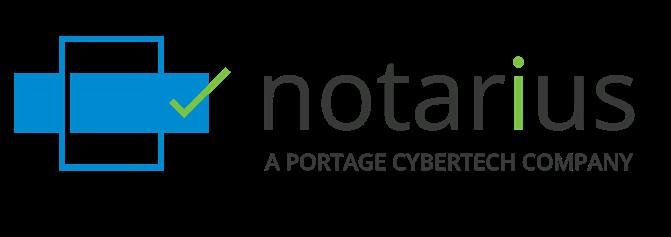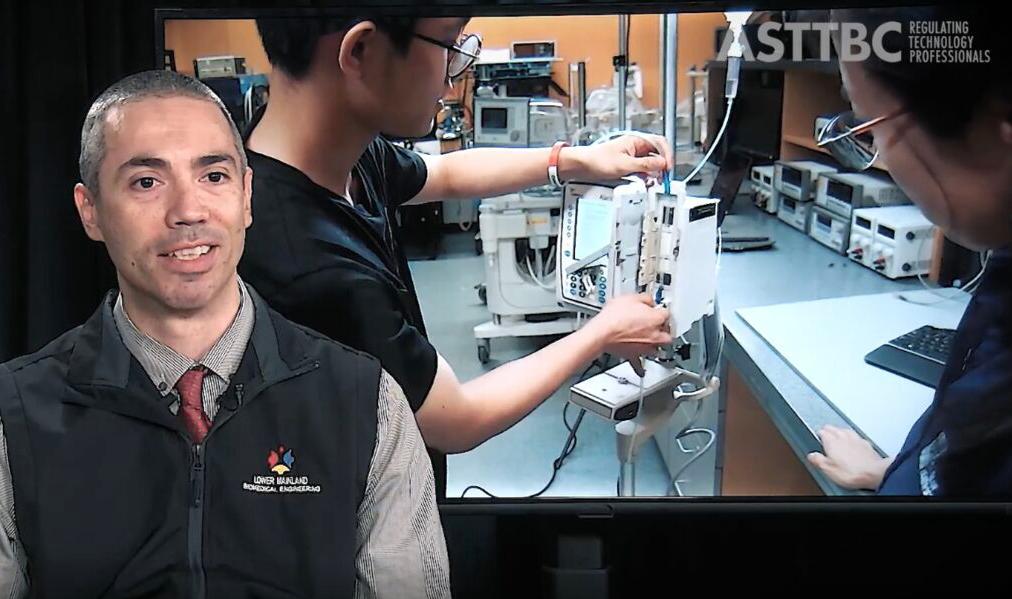







Headquartered in Surrey, BC, ASTTBC acknowledges the traditional Lands of the Semiahmoo, Katzie, Kwikwetlem, Kwantlen, Qayqayt and Tsawwassen Peoples.
We thank our hosts for their graciousness in welcoming us to carry out our work on their Land.
In so doing, we recognize their inherent Indigenous rights and title, the implementation without qualification of the UN Declaration on the Rights of Indigenous Peoples (UNDRIP), and our support for the 94 calls to action by the Truth and Reconciliation Commission.

We serve the public by contributing to a safe, sustainable society and environment by regulating technology professionals. We accomplish this through supporting the competent, safe, and ethical practice of applied science technology in British Columbia.
Regulation of technology professionals that safeguards the public through leadership and excellence.
ISSUE 159 Oct-Dec 2022
ASTTBCONNECT is published by the Applied Science Technologists & Technicians of BC.
EDITOR: Cara Christopherson 604-585-2788 ext. 501 cchristopherson@asttbc.org
The opinions expressed in ASTTBCONNECT are not necessarily those of ASTTBC or its Directors. All rights reserved. This publication may be reproduced provided credit is given as to the source of such material.
Circulation is appoximately 7,000 copies.
The Applied Science Technologists & Technicians of BC (ASTTBC) regulates approximately 8,000 applied science and engineering technology professionals in British Columbia under the Professional Governance Act (PGA).
For more information, please visit asttbc.org
As ASTTBC wraps up our first full year under the Professional Governance Act (PGA), we’d like to recognize that it has been a year of meaningful change for our organization, which has been possible, by and large, because of our collective ability to persevere. Persevering means to do something continuously despite obstacles; as your Chair and CEO, we recognize that the shifts underway this year have not come without their challenges, and we thank you for your steadfast support.

Several large projects have been in progress including advancing our discussions with the Office of the Superintendent of Professional Governance about a reserved practice for applied science technology professionals in BC. Once the reserved practice is finalized, registrants will be required to be registered with ASTTBC in order to perform their work, just as we see with engineers, foresters, applied biologists and agrologists. We have implemented our new regulatory information system which will ultimately streamline ASTTBC updates, information, registrant profiles, CPD reporting, renewal payments, invoicing, and more. Phases one and two of the project payment system, and CPD reporting are underway; followed by phases three and four in 2023. The system will be fully implemented by 2025.
Theresa McCurry ASTTBC Chief Executive Officer and RegistrarThis fall, ASTTBC begun releasing videos as part of our ongoing efforts to raise awareness about the regulated practice of applied science and engineering technology professionals. In September we released our “What are engineering technology professionals?” video and have continued to release videos that feature the scope of practice of technologists and technicians. Videos showcase the diverse backgrounds of ASTTBC registrants, the importance of education, including international education, and the ASTTBC Code of Ethics. A new video will be released each month until summer 2023.
We are constantly impressed by the talent of both our staff and the ASTTBC registration and their focus on our organizational values of Professionalism, Accountability, Integrity and Inclusion. Perseverance is necessary in the work required to implement change, and it’s our ability to navigate through, and withstand these changes, that will ultimately see us to the other side.
ASTTBC Chair

David
Sparanese, PTech, AScT, CPWI3
ASTTBC CEO and Registrar Theresa McCurry, BSc, PMPAs our current CPD cycle wraps up, a new one will begin December 1, 2022. Since introducing mandatory continuing professional development requirements in February 2021, we’ve heard from registrants on what has been working and what has not. Like registrants, ASTTBC is also committed to improving how we support professional development.
20 CPD hours was too high, and difficult to achieve

The ratio count of three to one hours or two-to-one hour(s) between the learning categories was confusing
It was unfair that eligible CPD courses were only through a post-secondary institution

The most common feedback we heard was:
The learning value for some of the eligible activities was negligible
The CPD program overall was inflexible and didn’t allow registrants to customize their development.
As we move into the 2023 CPD year, we’ve implemented a suite of changes to our bylaws to help simplify our CPD program and make it even easier for registrants to complete.
We worked hard to ensure the changes to the CPD program make sense for registrants. We believe registrants will find it easier to achieve their CPD and meet the requirements in a way that matches their own professional goals and learning preferences.
— Robin Rebeiro, practice assessment coordinator, ASTTBC.

Effective for the 2023 (December 1, 2022 to November 30, 2023)
CPD cycle and moving forward, the following changes have been made to CPD requirements:
We’ve lowered the required hours. Practising registrants, both full time and part time, must now complete 12 hours of eligible CPD activities within the designated year.
There are no more confusing ratios — one hour of completed activity is equivalent to one CPD hour. It’s that simple.
Eligible CPD courses now include private training and other non post secondary education/courses, in addition to post-secondary education.
Registrants can now carryover up to six CPD hours into the following two years, under the structured learning category (e.g. courses, teaching, or presenting)
Registrants now have the flexibility to customize their professional development to suit their individual learning style. We’ve simplified the eligible activities into one of seven activities:
1. Courses completing a structured course or online program.
2. Teaching teaching a course or training program.
3. Presenting presenting at a professional symposium.
4. Content development creating informational or instructional content related to a registrant’s practice.
5. Conducting research process of identifying a question, gathering information, analyzing, and evaluating evidence, and drawing conclusions.
6. Technical training receiving training of an informal structure or from an unapproved training provider.
7. Volunteering contributing to the development of the profession and the community of practice on an unremunerated basis.
We’ve removed employment as a CPD category. Likewise, we have also removed earning CPD hours for activities such as attending AGMs, networking, or attending professional update meetings.
At least two (2) of the 12 annual CPD hours must include Indigenous Awareness training
The deadline to report all CPD hours is November 30 of each year.
Registrants must hold on to all records and certificates of completion to prove CPD claims in the year.
Eligible CPD activities are typically completed in addition to a person’s full-time practice and not as part of daily work activities.
The deadline to log all CPD hours is still November 30, of each year; however, registrants should report well before that date, as meeting CPD requirements does have a direct impact on the ability to renew ASTTBC registration.
As most registrants know, part of the renewal process includes the completion of a declaration attesting that they are current and competent in their knowledge, skills and practice and are compliant with the CPD requirements.
“Professional development doesn’t stop because you hit your 12 hours for the year. It’s a continuous path of self development and we want you to be successful. This is a long term investment in yourself and your profession,” says Frank Do, practice advisor, ASTTBC.
ASTTBC’s CPD program is administered through an online self reporting system and supported by the Professional Governance Act, ASTTBC Bylaws, and practice resources.
Looking forward to 2023 — ASTTBC will release new CPD guidelines to provide clarity on the new requirements, as well as implement a revamped online CPD system to better integrate information into a one-stop portal. While ASTTBC transitions to this new online system, the existing portal will cease to accept entries for activities earned December 1, 2022 onward. For CPD activities that are earned in the 2023 CPD cycle, registrants must keep their records and enter them when the new system becomes available next year. ASTTBC will host introductory webinars during the year to better acquaint registrants with the new system.
We hope the changes to the CPD program have a simple, yet meaningful impact on registrants’ professional development. As always, ASTTBC will look for opportunities to grow and improve this program and remain engaged with registrants on all CPD related feedback.
CPD inquiries can be addressed by email to, CPD@asttbc.org.
In our ever changing technological environment, the public expects that technologists, technicians and technical specialists keep informed of the latest developments in their practice.

To support this, practising registrants are required to complete 12 Continuing Professional Development (CPD) hours annually.
Take a course
May carryover 6 extra hours for next 2 CPD years
Teaching a practice related course
Presenting in profession related seminars
(12 hours required per CPD year)
Creating instructional materials/content development
Self-Directed Learning
Max of 8 hours/CPD year
Conducting Research
Vendor and on the-job technical training, webinars & seminars
Volunteering with ASTTBC as: - member of Statutory Committee - Subject Matter Expert
Volunteering
Max of 8 hours/CPD year
Contributing to the development of the profession and/or community of practice
There is definitely a potential for exposure to high stress in this job, so it’s essential to have a methodical problem-solving approach to troubleshooting; that’s our key role along with anticipating problems and dealing with them before they occur — preparing for the worst but hoping for the best.





When he’s not doing his day job as a member of the Lower Mainland Biomedical Engineering Department (LMBME), Pej Namshirin builds Saturn V rockets and moon landers out of Lego that is.
“Dad’s Lego” is how Pej describes the largescale models that adorn a filing cabinet in his office. Back home he started building a Discovery space shuttle, but it’s been taken apart again, waiting for another day of creative inspiration.
For someone whose workdays are often filled with the stress of quickly finding fixes for malfunctioning medical machines at Metro
Vancouver hospitals, Pej says Lego modelling is an ideal way to relax.
“I’m still working with my hands and it’s engineering in a way, but it certainly helps me take my mind off work,” he says. “There’s a lot of satisfaction in building something with your hands.”
While his current position as Manager, Operations and Regional Initiatives at LMBME (VGH/UBCH/Richmond) means Pej doesn’t spend as much time working with is hands as he once did, his appreciation of what it takes to be successful on the front lines of health care has not diminished.
In simple terms, Pej describes his job as being responsible for the lifecycle of medical devices.
“That involves everything from understanding the needs of clinical users and what they’re looking to accomplish to assessments to figure out what kind of technology meets that need,” he says. “We are involved with technical assessments, clinical evaluations and procurement to the point where it actually arrives on site. We also take care of the ongoing maintenance, quality assurance and repairs during the equipment’s lifespan.”
Biomedical engineering technologists are also responsible for the decommissioning, disposal and, if possible, the donation of equipment that’s no longer needed to other medical facilities that might be able to utilize it.
“And the cycle repeats constantly because, as we’re replacing something, we will be simultaneously looking to acquire new equipment to take its place,” says Pej. “And that includes everything from handheld thermometers to infusion pumps, MRI machines, CT scanners, X-ray systems, and everything in between.”
It’s a highly technical occupation that requires the right technical training, adds Pej. In his case that was a two-year program in biomedical engineering technology at the British Columbia Institute of Technology (BCIT) followed four years later by a degree in technology management from BCIT.
“The degree was in addition to the baseline qualification for technologists and was broader in its scope. All the technologists that work in the department have biomedical engineering
technology diplomas, or something equivalent,” he notes.
Ongoing training is also important to keep up with rapid evolution of the medical devices industry, says Pej, pointing out that a growing number of his colleagues are pursuing additional qualifications to bolster their baseline skills.
“There’s so much incentive for improvement across the whole sector, whether it’s new innovations that improve clinical outcomes, or just technology progressing to do the same thing in a more efficient or better way, and we need to keep up with the change,” he says.
Of course, the COVID-19 pandemic has been an added challenge for Pej’s team and biomedical engineering technologists everywhere.
“VGH was the hub of the initial deployment of ventilators and respiratory equipment for the province. It has the highest concentration of biomedical engineering technologists, and we have the space to handle large shipments of equipment, so it’s been all hands on deck for a long period of time to meet the needs and the demands of the front lines,” he says.
At the same time, Pej and his colleagues needed to keep all other medical equipment functioning optimally to ensure the best possible patient care at the region’s hospitals while facing an ongoing shortage of qualified candidates to bring onto the team. Maintaining a balance has been a major challenge and hiring new staff is not as simple as it may seem.
Recruitment, also one of Pej’s responsibilities, includes ensuring that potential hires have the right temperament for the job.
“Assessing applicants is a pretty involved process,” he says. “There’s a panel interview, a written test, and a series of technical assessments including troubleshooting a device that we have deliberately disabled.”


Pej points out that replicating stressful situations during candidate assessments is important because they provide insight into how they may react in a real-life situation, such as being called into an operating room to repair or replace a piece of equipment in the middle of surgery where a patient’s life may be at risk.
“There is definitely a potential for exposure to high stress in this job, so it’s essential to have a methodical problem solving approach to troubleshooting; that’s our key role along with anticipating problems and dealing with them before they occur – preparing for the worst but hoping for the best,” he says.
Supporting one another within the team is also important to talk through challenges, solve problems and deal with stress. And if all else fails there’s always Lego.
Over the years, ASTTBC has presented to thousands of post secondary students to connect and engage with aspiring technologists and technicians. By going into schools and meeting students, ASTTBC offers students valuable knowledge about their future roles and responsibilities as registered professionals.

When the pandemic began, ASTTBC had to pivot, and quickly moved to on line presentations. And now, after more than two years, we are pleased to announce we have shifted back to in-class presentations.
“Since September we’ve presented to approximately 500 students at five technical colleges and universities in BC,” says Bruce Stevens, ASct, ASTTBC.
“The institutions we’ve been working with have been supportive in giving ASTTBC the time to educate students on the important and necessary place we have in the industry.”
So far, presentations have been geared towards first year students at Okanagan College, Thompson Rivers University, Selkirk College, British Columbia Institute of Technology (BCIT) and Kwantlen Polytech University. Presentations focus on the purpose of professional regulation, the Professional Governance Act (PGA) and its governance of regulators, what it means to be a regulated professional, the importance of ethics and professionalism, the role of ASTTBC, and responsibilities of registrants.
In other welcomed news for students — ASTTBC significantly decreased the student application and renewal fees, which is now reflected in the updated Bylaws: student application $20.00, student renewal $25. By making registration affordable for students, ASTTBC hopes this encourages more students to become ASTTBC registrants, to ultimately open a range of different pathways and demonstrate that they meet requirements for entry to their desired profession. By registering with ASTTBC students will gain the ‘registrant’ status, as opposed to a ‘member’ status which is how many regulators categorize students when no fee is charged.
“ASTTBC students are considered registrants, rather than members,” says Stevens. “This is a significant difference because those students who sincerely recognize

the value and are prepared to pay, even a small amount, are demonstrating that if there is a sacrifice, then there must be value.”
For the remainder of the year, ASTTBC is scheduled to present to second year students, as well as provide updates at program advisory committee meetings. In 2023, ASTTBC will continue speaking with second year students and return to BCIT to complete presentations to first-year students. ASTTBC also hopes to coordinate engagement of the ASTTBC Young Professionals Group (YPG) and the British Columbia Women In Technology (BCWIT) group to provide presentations to post-secondary schools in the province.
In major construction projects we are a small but important cog in a big machine and if we delay the project by two or three months or two or three weeks or two or three days, it has an impact.



When Brad Walton closed the Rolf Jensen and Associates office as a Building Code and Fire Protection Consultant in 1992 and then established a company with strong shareholders and principles, he had no idea that the move would come full circle nearly 30 years later.
Brad had worked for Rolf Jensen & Associates in Vancouver for five years, but decided it was time to branch out, so he and two associates established their own company, Burnaby-based CFT Engineering.
Last year they sold CFT to what had by then become Jensen Hughes, an international fire safety and consulting engineering firm, and joined the organization as Operations Leader, Canada-West Region. The circle was complete.
A graduate of Algonquin College, Ottawa where he completed the Engineering Fire Protection Program, Brad has more than 30 years’ experience in operations and process involving the Building and Fire Code, and now oversees the Western Canada Fire Protection Engineering Building Code Consulting Services for Jensen Hughes. “Primarily, we are tasked with finding solutions to unique fire and Building code challenges,” he says.
That means working with companies and municipal fire departments to develop and maintain the level of safety required by the building and fire code or fire and life safety standards by a municipality or industry.
“In some cases, we might recommend additional fire protection features or introduce new fire extinguishing media and figure out how to maintain the objectives of various fire and life safety codes,” says Brad.
Like other consultants in the fire protection industry, Brad hopes the systems put into buildings on his recommendation are never used, but he must be confident that they will save lives and property if they are ever needed.
Striking a balance between the time it takes to come up with the right fire protection solution without holding up a project and dealing with various regulatory bodies at times adds to the stress of the job, he adds.

“In major construction projects we are a small but important cog in a big machine and if we delay the project by two or three months or two or three weeks or two or three days, it has an impact,” he says.
But Brad says he thrives on challenges and solving complex problems and then witnessing the solutions being implemented – and that takes confidence in himself and his staff. “The work we do meets industry standards and goes beyond minimum code requirements,” he says. “That’s important because we often
work with good developers, good owners, good contractors, and they’re not looking for the minimum.”
Brad says the biggest change in fire risk analysis he has seen since he started is the widespread use of sprinkler systems, which have also allowed timber frame or combustible structures such as CLT buildings to be built much higher than previously.
“When I started, sprinklers were a good idea, but not everywhere. Now you have to sprinkler almost everywhere,” he says. “They increase the level of safety considerably, but you don’t always see the result because the sprinklers contain a fire out before it causes too much damage or harms people. You don’t see those success stories on the news, but they are more common than the uncontrolled fires we see in non-sprinklered buildings or the older stock of existing buildings”
The next big change Brad foresees in fire protection is on site water storage to fight fires in the event of water supply being disrupted during an earthquake and an emergency energy source to pump the water.
This would not be for every building, but for high rise buildings, high risk industrial sites, or buildings with occupants with potentially limited ability to egress such as hospitals.
“If we have a seismic event, local emergency services will be busy and the higher we build buildings there is more reliance on internal sprinklers system to contain and control or extinguish fires,” he says.
Brad is a past Chairman of the ASTTBC Fire Protection Task Group, past three term member of the BC fire code committee (representing ASTTBC), served the subcommittee on Sprinkler/Standpipe Systems and the subcommittee on Smoke Control
Systems, and has previously delivered the Special Fire Suppression Systems Program at the British Columbia Institute of Technology, and has represented ASTTBC on the EGBC Building code committee for over 20 years.

He is registered as an Applied Science Technologist in the Province of British Columbia and is a member of the Society of Fire Protection Engineers, the National Fire Protection Association, BC Building Inspectors Association, Vancouver Fire Prevention Officers Association, and the Canadian Fire Alarm Association.
In his free time Brad loves to fish, mainly for salmon in BC’s coastal waters around Port Hardy and Ucluelet on Vancouver Island.

Claire Alice Rosalind Abbott
Caleb Donovan Allen
Ramelo Ortiz Anayas
Benjamin Beau Baxter
Cody Micheal Bessey
Nicholas Allan Clark
Jaider Da Silva Leite
Pavel Dlouhy
Colm Martin Gray
Todd Michael Hellinga
Dylan Shinichiro Huang
Leigh Anne Huddart
Kirsti Ann Juurakko
John Patrick Joseph Kenny
Bongseok Kim
Madison Janelle Kot
Koreena Joan Lane
Catherine Rose Laurie Jang Hee (Charlie) Lee
Jaehyeon Lee
Maria Therese Luyten
Desiree Dawn MacKay
Babtunde Temitayo Maraiyesa
Alex Barwise Parrish
Cosmin Pioaru
Jared Douglas Sutherland
Minh Phuc Tran
Brian Vachon
Eugene Dominic Yeung
Jacob Joseph Adams
Martin Bilina
Cyrus Steven Choi
Devon Blair Connell
Keith Lee Dais
Emma Jane Darrah
Tanner Jason Daviduke
Gregory Michael Ewan
Samina Fitzgerald
James Richard Gilbert
Laura Avalyn Megan Gray
Tyrel Robert Hansford
Graeme Arthur Harfman
Christopher Mark Holomego
Jason Tyler Kusisto
Norman Le Tyler William McDougal
Quentin Joseph Gerard O’Krane
Andrew Daniel Rockland Olsen
Byeongjun Park
Cameron Robert Peters
Jason Mathew Schuck
Angelika Sosnitskyi
Luke David Whittaker
Joseph Paul Boulanger
Kelvin Chau
Evan William Hessels
Hsiu Hui Lai
Steven Christopher Learning
Kristi Leigh Lemire
Travis James Penner Edgaras Virvicius


Royce Bailey
Thomas Farrell
Alan Hazlewood
Peter Jmaeff
Harold Karcher
Roy Leslie
Fleetwood Ma
Richard Marshall
Matthew McKechnie
Rene Montehermosso
Jimmy Mordeno Rico
Brent Riley
Christopher Harley Rodford
William Scudamore

Under the Professional Governance Act, ‘Council’ is referred to as ‘Board of Directors’, President’ is ‘Chair’ and ‘Vice-President is ‘Vice Chair’.
David Sparanese, PTech, AScT, CPWI 3
Vice Chair
Ken Zeleschuk, MBA, PTech, RTMgr, AScT, Dipl.T

Sarah Campden, AScT, RTMgr
Dana Graves, AScT, CSO
Carlo Vijandre, AScT, PMP, FMP
Prakash Joshi, AScT, PTech, PLEng
Randy Meszaros, AScT, PMP, CET
Mike Battistel, AScT
Roslyn Kunin, PhD
James Coble, MA, EdD
Mary O’Callaghan, MBA, FCMC
Jayde Wood, JD, MSc


